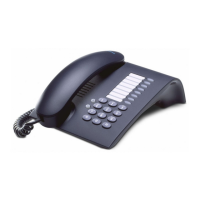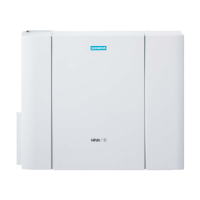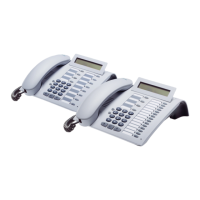Station attributes
Programming guide
A31003-K16-X001-3-7620
,
07/99
10-44
Hicom 100 E Version 2.1, Service manual
10.6.5 Call allocation for incoming analogue trunk calls
In contrast to incoming ISDN calls, it is not possible to reach extensions using direct dialling in
with analogue trunk calls.
Each analogue trunk line is, therefore, permanently assigned to an destination extension (an
extension or a call group). In default, this destination extension is extension 11.
Each analogue destination extension is assigned a call destination list which specifies
the exact call procedure (e.g. call forwarding, forwarding time, etc.).
The layout and programming of the 16 possible call destination lists is described in Section
10.6.7.
10.6.5.1 Changing the analogue destination extension during the day
In the case of incoming analogue trunk calls during the day, each analogue trunk line can be
assigned any destination extension.
Example
: extension 23 is programmed as the analogue destination extension for line 3.
Example
: extension 23 is to be assigned a call forwarding destination (additional forw. ext.) that
differs from that of the other extensions for external daytime calls. This ext. must be assigned
to a specific call destination list (call destination list 11 in this example), see also Section 10.6.7.
Input sequence Meaning Display
A 1 5 1 7
Call allocation per line, day
(select line 1–32 with "+" and "–" or
directly with "#")
Line 1: 11
B#
Select line Line:
C3
Select line Line: 3
D<OK>
Confirm input Line 3: 11
E*
Change input Line 3:
F
23 Destination extension = 23 Line 3: 23
G
<OK> Confirm input Line 3: 23
H
<F8> Return to Start menu System administration
The new analogue destination extension for line 3 during the day is now extension 23.
Input sequence Meaning Display
A 1 5 1 9 3
List assignment for ext.11 during the
day
(select ext.11–74 or group 881–888
with "+" and "–" or directly with "#")
List for ext. no. 11: 14
B#
Select extension List for ext. no.:

